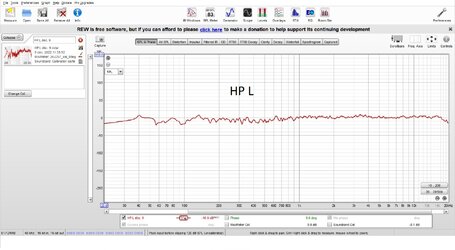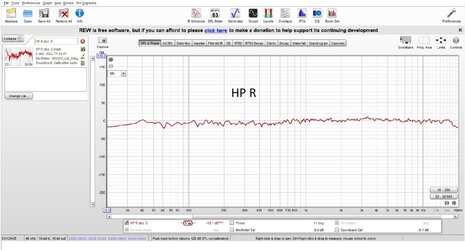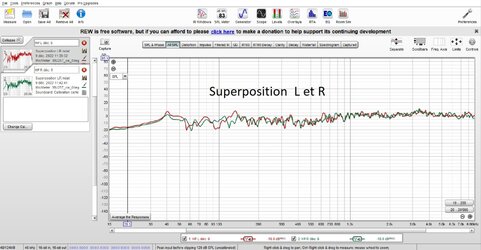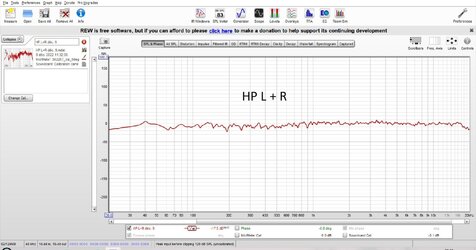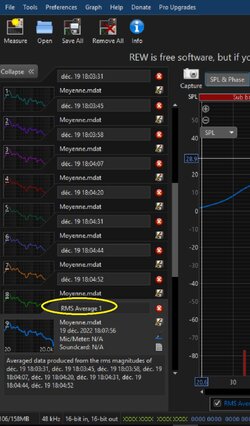audiolg
New Member
Thread Starter
- Joined
- Oct 30, 2022
- Messages
- 10
More
- Preamp, Processor or Receiver
- Rotel RC 1082
- Main Amp
- Rotel RB 1070
- DAC
- Teac UD 505
- Universal / Blu-ray / CD Player
- Lecteur CD Revox B225
- Other Speakers or Equipment
- JBL L112 Monitor
- Other Equipment
- - Thorens TD 160 B MKII avec bras SME SERIES III - Technics SL 1210 MK5 - Magnetophone à cassettes Revox B215 - Magnetophone à bandes Revox B77
Bonjour à tous,
Je suis débutant dans les mesures acoustiques et après de nombreuses recherches, tutos et en passant d’un forum à l’autre, on m’a conseillé de venir ici où les sujets concernant les analyses acoustiques et l’utilisation du logiciel REW sont nombreux. Mes questions sont d’un débutant et ce qui semble évident pour la plupart d’entre vous, ne l’est pas forcément pour moi qui suis novice dans ce domaine, c’est pourquoi, je vous remercie par avance pour votre compréhension et pour votre patiente.
Mon but est de résoudre au mieux les problèmes acoustiques de mon petit salon (4.5m x 4.5m x 2.4m) en corrigeant les fréquences qui posent problème avec un EQ. La pièce a déjà été traitée avec des panneaux et des tableaux décoratifs acoustiques, sans exagérer car esthétiquement, ça doit rester un salon.
J’utilise le matériel suivant :
PC portable (Windows 10)
REW V5.20.13
Interface audio Focusrite Solo, calibré et fichier dans REW
Micro de mesure Sonaworks avec fichier de calibrage fourni par le fabriquant.
Préampli. Rotel
Ampli. Rotel
JBL L 112
EQ numérique IMG DEQ 230
J’ai effectué mes premières mesures en un seul point d’écoute idéal en respectant la position du micro de mesure à hauteur des oreilles et des enceintes selon le triangle équilatéral.
Ci-après, les courbes que j’ai obtenues. Je suis impatient de lire vos commentaires sur l’interprétation des ces courbes et ça serait super si quelqu’un pouvait m’aider à configurer en détail toutes les options de réglage pour effectuer une analyse optimale dans la fenêtre RTA ainsi que dans la fenêtre EQ dans REW pour savoir quelles sont les fréquences à corriger.
Je suis débutant dans les mesures acoustiques et après de nombreuses recherches, tutos et en passant d’un forum à l’autre, on m’a conseillé de venir ici où les sujets concernant les analyses acoustiques et l’utilisation du logiciel REW sont nombreux. Mes questions sont d’un débutant et ce qui semble évident pour la plupart d’entre vous, ne l’est pas forcément pour moi qui suis novice dans ce domaine, c’est pourquoi, je vous remercie par avance pour votre compréhension et pour votre patiente.
Mon but est de résoudre au mieux les problèmes acoustiques de mon petit salon (4.5m x 4.5m x 2.4m) en corrigeant les fréquences qui posent problème avec un EQ. La pièce a déjà été traitée avec des panneaux et des tableaux décoratifs acoustiques, sans exagérer car esthétiquement, ça doit rester un salon.
J’utilise le matériel suivant :
PC portable (Windows 10)
REW V5.20.13
Interface audio Focusrite Solo, calibré et fichier dans REW
Micro de mesure Sonaworks avec fichier de calibrage fourni par le fabriquant.
Préampli. Rotel
Ampli. Rotel
JBL L 112
EQ numérique IMG DEQ 230
J’ai effectué mes premières mesures en un seul point d’écoute idéal en respectant la position du micro de mesure à hauteur des oreilles et des enceintes selon le triangle équilatéral.
Ci-après, les courbes que j’ai obtenues. Je suis impatient de lire vos commentaires sur l’interprétation des ces courbes et ça serait super si quelqu’un pouvait m’aider à configurer en détail toutes les options de réglage pour effectuer une analyse optimale dans la fenêtre RTA ainsi que dans la fenêtre EQ dans REW pour savoir quelles sont les fréquences à corriger.







